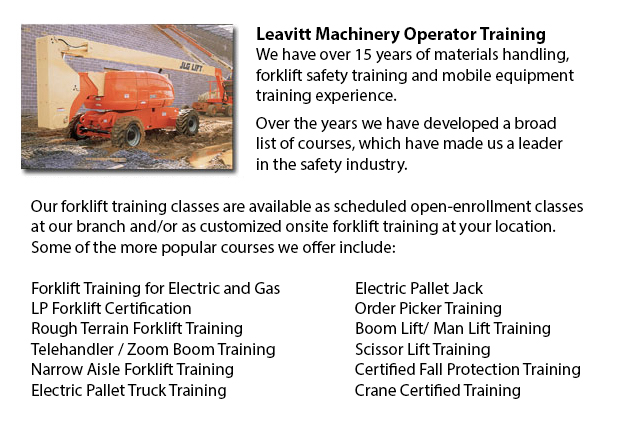
Aerial Platform Training Saskatchewan - Aerial lifts might be utilized to accomplish several different tasks performed in hard to reach aerial spaces. Many of the duties associated with this style of lift include performing daily repair on structures with lofty ceilings, repairing phone and power cables, lifting burdensome shelving units, and trimming tree branches. A ladder might also be utilized for many of the aforementioned tasks, although aerial lifts provide more safety and stability when properly used.
There are a variety of different versions of aerial lifts available, each being capable of performing moderately unique jobs. Painters will sometimes use a scissor lift platform, which is able to be used to get in touch with the 2nd story of buildings. The scissor aerial platform lifts use criss-cross braces to stretch out and lengthen upwards. There is a table attached to the top of the braces that rises simultaneously as the criss-cross braces elevate.
Container trucks and cherry pickers are another kind of aerial lift. They possess a bucket platform on top of a long arm. As this arm unfolds, the attached platform rises. Forklifts utilize a pronged arm that rises upwards as the lever is moved. Boom lift trucks have a hydraulic arm that extends outward and elevates the platform. Every one of these aerial lift trucks call for special training to operate.
Training courses offered through Occupational Safety & Health Association, known also as OSHA, embrace safety methods, system operation, upkeep and inspection and device cargo capacities. Successful completion of these education courses earns a special certified license. Only properly licensed people who have OSHA operating licenses should operate aerial lift trucks. The Occupational Safety & Health Organization has established rules to maintain safety and prevent injury when utilizing aerial platform lifts. Common sense rules such as not utilizing this machine to give rides and ensuring all tires on aerial platform lifts are braced so as to prevent machine tipping are noted within the rules.
Unfortunately, statistics illustrate that in excess of 20 operators die each year when operating aerial lift trucks and 8% of those are commercial painters. Most of these mishaps are due to inappropriate tire bracing and the lift falling over; therefore a lot of of these deaths were preventable. Operators should make sure that all wheels are locked and braces as a critical safety precaution to stop the device from toppling over.
Other suggestions involve marking the surrounding area of the device in an obvious manner to protect passers-by and to guarantee they do not approach too close to the operating machine. It is crucial to ensure that there are also 10 feet of clearance amid any electrical cables and the aerial hoist. Operators of this machinery are also highly recommended to always have on the proper safety harness when up in the air.
-
Forklift Ticket Saskatchewan
Forklift Ticket Saskatchewan - Pallet jacks and forklifts are both meant for basically the same purpose; to move supplies from one location of your warehouse to another. This is pretty much where the comparison stops however. With the pallet jack, th... More -
Loader Ticket Saskatchewan
Loader Ticket Saskatchewan - Gehl articulated loaders have been made to suit practically any condition. They provide great traction and optimal maneuverability due to a heavy-duty oscillating joint that offers forty five degree rotating angles left a... More -
Forklift Training Programs Saskatchewan
Forklift Training Programs Saskatchewan - Are you searching for work as a forklift driver? Our regulatory-compliant mobile equipment operator training provides instruction in kinds of forklifts, pre-shift check, fuel kinds and handling of fuels, and... More -
Heavy Equipment Operator Classes Saskatchewan
Heavy Equipment Operator Classes Saskatchewan - A heavy equipment operator is an individual who has received the right training in order to operate a particular kind or piece of machinery. There are lots of ways for the operator to undergo training a... More -
Telehandler Training in Saskatchewan
Telescopic handlers usually known as telehandlers for short, are an extremely popular piece of heavy construction equipment. They are usually utilized in the construction and agricultural trades. These equipments have farthest reaching capacity and a... More -
Narrow Aisle Forklift / Order Picker Training / Electric Pallet Jack / Electric Pallet Truck Training in Saskatchewan
A pallet lift is a piece of equipment dedicated in the transporting of pallets of various dimensions and weights. They can be utilized as an attachment for forklifts, cranes and other types of heavy machinery or be applied on their own. Pallet lifts... More -
Operator Safety Training, Re-Qualification Training, In-House Instructor Training in Saskatchewan
Used in just about all industrial construction sites, warehouse operations or boat yards, the lift truck is a very important component so as to help pick up and transfer supplies. The reach feature of a forklift can help improve the applications whic... More -
Aerial Lift Ticket Saskatchewan
Aerial Lift Ticket Saskatchewan - Boom vehicle are often used by phone, cable and utilities firms as they have extended folded arms which are generally folded over the roofs of business vehicles. On the end of the extension of extendable arms usually... More

Forklift Training Saskatchewan
TOLL FREE: 1-888-254-6157
Saskatoon, Saskatchewan
forklifttrainingsaskatchewan.com
Email Us
About Us



